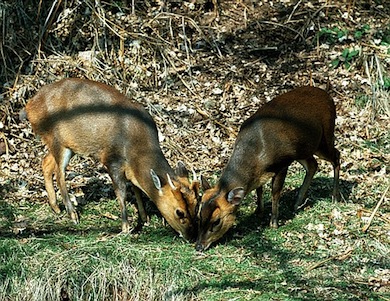Roe Green Park occupies two former farms, taken over during the rapid development of the area in the 1930s. Some of the original trees and hedges of one of them, Valley Farm, are still to be seen in the park today. The manor house of the other, Roe Green Farm, survives as Kingsbury Manor House still with its original walled kitchen garden. This has been adapted as a demonstration wildlife garden (Roe Green Walled Garden). The site is managed by volunteers from the Barn Hill Conservation Group and is open three days a week. It caters for a range of school and community groups, including those with learning difficulties.Brent Healthy Walkers use this site – a Walking the Way to Health (WHI) scheme; see link for details.
Local Wildlife Site
Accessible Sites of Importance for Nature Conservation
Roe Green Park
Borough: Brent
Grade: Borough Grade II
Access: Free public access (all/most of site)
Area: 16.24 ha
Description
Wildlife
The site comprises a variety of formal and informal amenity areas. Mature oaks on the perimeter and running through the site mark the lines of former hedgerows. Further native hedges occur on the edges of the park.Near the western side of the park there is a nature area. This consists of a mixture of native and non-native planted trees: hornbeam, oak, false-acacia, wild cherry, silver birch, rowan, Scots pine and other conifers. The vegetation between is allowed to grow uninhibited.The southern half of the Walled Garden is managed as a formal area, but much of the northern half is natural. This area includes such features as a circular brick pond, a wildlife pond and a series of kitchen sink ponds, log-piles and nesting boxes. There are beds devoted to herbs and to plants that resist drought. The garden is run organically. Hedgelaying is practised here as a demonstration of the craft.Nearby is a large decaying oak trunk, which is good for insects. The Manor House gardens surround the house on two sides and are bordered with a belt of trees and shrubs. These include a number of horticultural specimens that are rare in London. Butterflies such as common blue and small skipper can be seen here, along with day-flying moths such as narrow-bordered five-spot burnet and burnet companion. The area is rich in grasshoppers, ground beetles, solitary bees and other unusual insects. Many birds may be seen and heard, including dunnock and green woodpecker. Muntjac deer lie in the long grass, and the relatively rich plant life includes tansy, narrow-leaved ragwort, hairy sedge and hard rush.Facilities
Information; cycle paths; playground; recycling facilities.
Muntjac deer feeding © Andy Purcell/CEC
Feedback
Have a question or a comment for this site, or notice anything missing or out of date? Please contact us.
